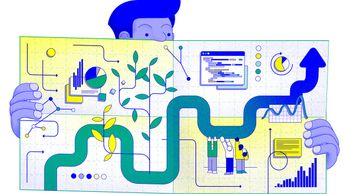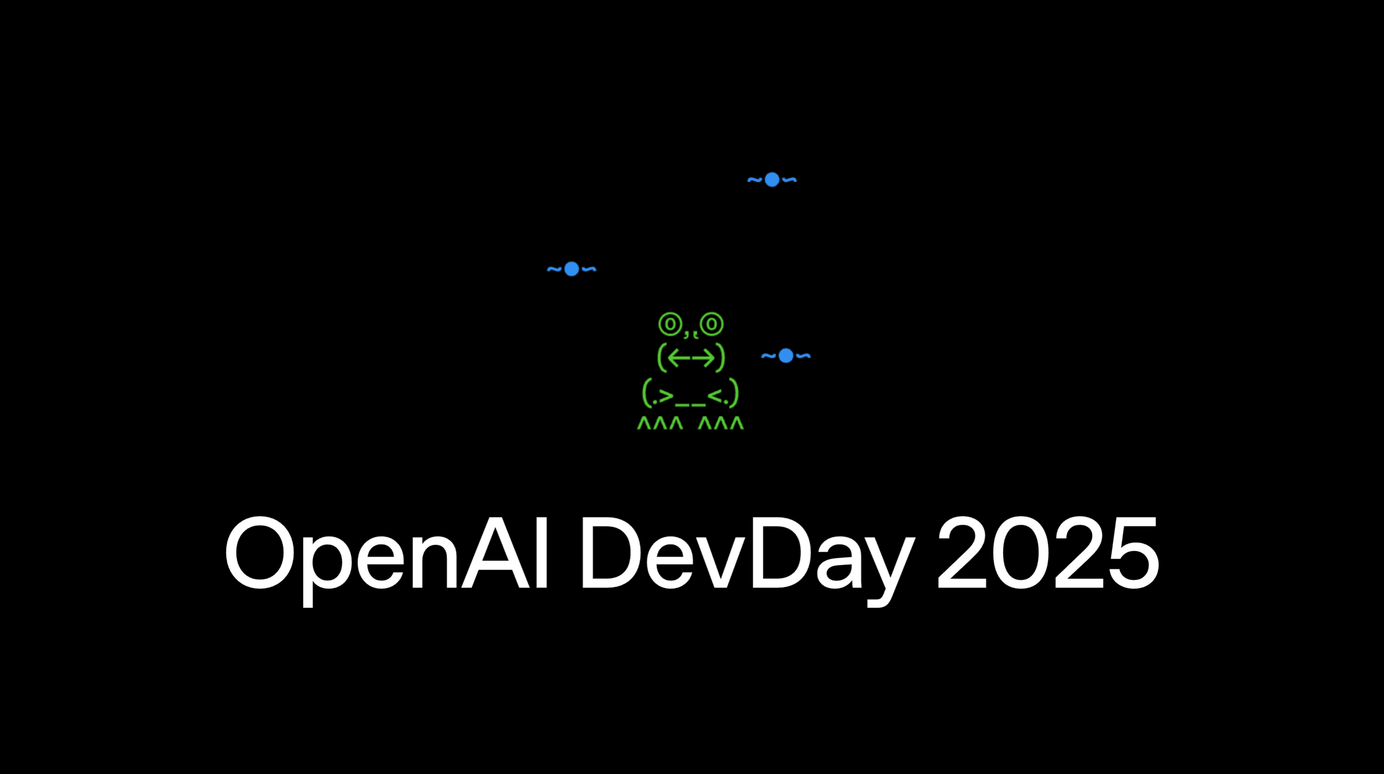
OpenAI DevDay 2025
It is truly the best time in history to be a builder.
Table of Contents
Yesterday, I crossed one (and more) items off my bucket list: I went to OpenAI DevDay 2025. I’d been waiting for this moment since I first started tinkering with AI tools, and it’s why I came to the US, especially Berkeley: to immerse myself at the center of technology, not just read about it.
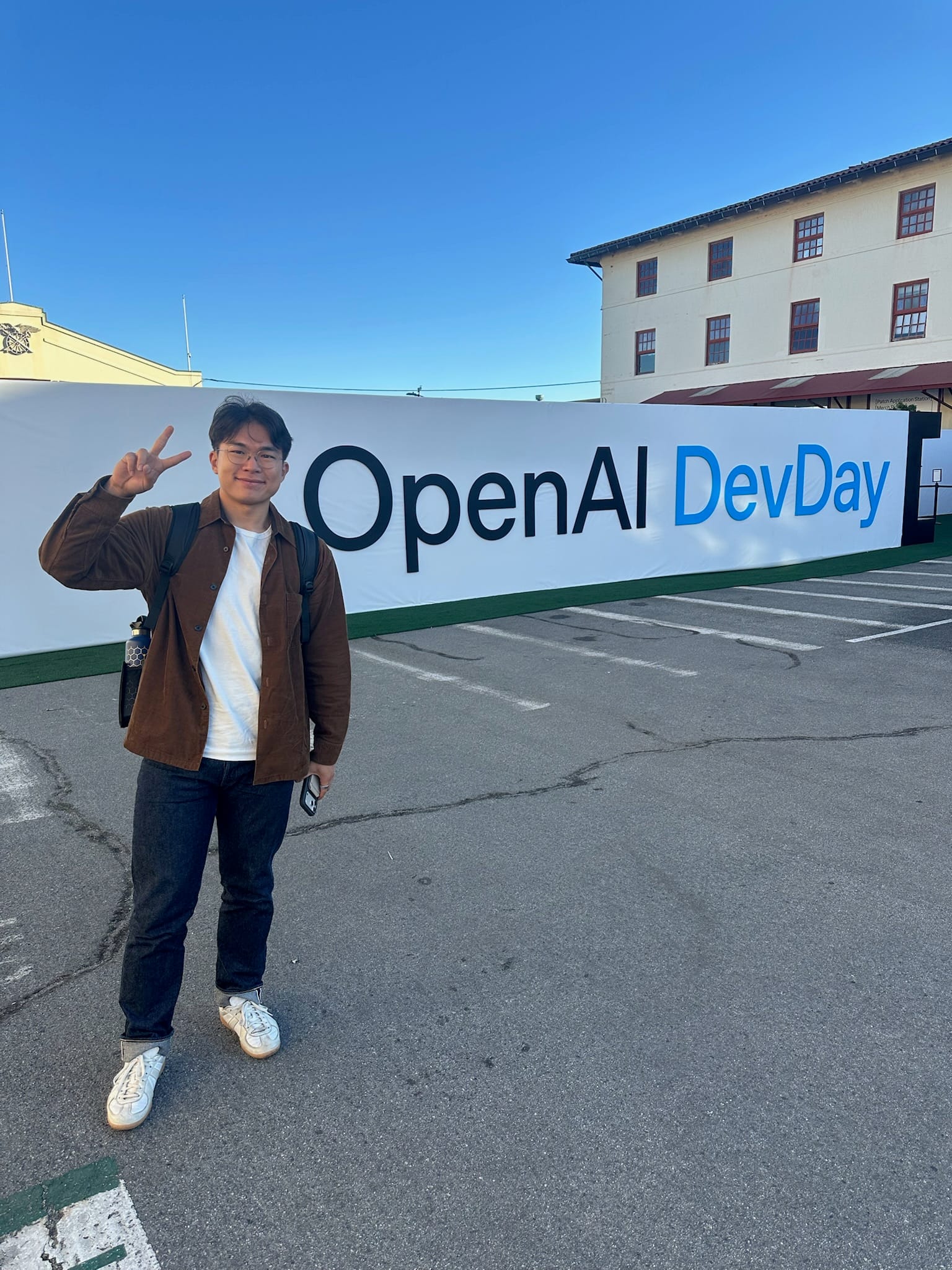
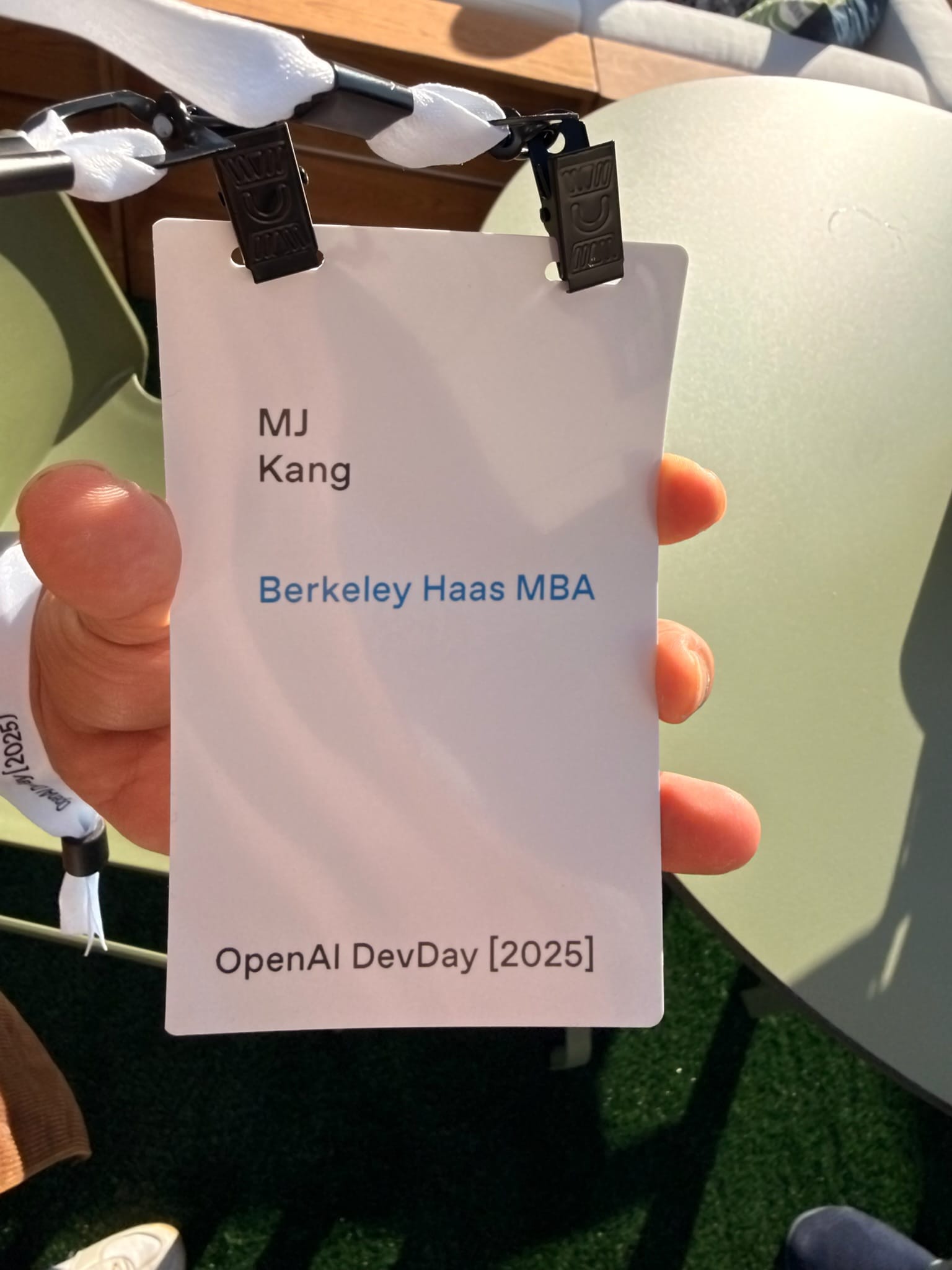
The vibe reminded me of the early days of Google and Apple’s developer events—white-and-wood interiors, curious faces everywhere, and the quiet buzz of people genuinely building the next wave. I met many founders and OpenAI team members (including several Haas alums!), and I was genuinely impressed that I can interact with them and share each other's thought.
Because developers sit at the frontier of technological progress, we can glimpse the future at these conferences. TL;DR: The event focused on 1) expanding capabilities for developers, 2) redefining workflow, and 3) broadening the developer’s scope.
Here are my detailed thoughts on the major announcements:
Apps in ChatGPT: MCP's Dream Comes True

Apps in ChatGPT is probably the most consumer-facing change from this event, and arguably, the most strategic one. For years, we’ve seen LLMs as back-end intelligence that lives behind APIs or specific tools. But this update flips that dynamic. Now, third-party apps can plug directly into ChatGPT, turning it into a unified surface where discovery, orchestration, and execution happen seamlessly in one place.
When you think about it, this feels like an evolution of the MCP, but with a front-end layer that finally makes it tangible for everyday users. MCP connected data sources; Apps connect experiences. You no longer have to leave ChatGPT to book a trip, analyze a dataset, or draft a contract—each step happens inside one interface, powered by multiple services working in harmony.
That’s why this shift feels bigger than a feature launch. ChatGPT is evolving into an interface layer, almost an operating system for human-AI collaboration. It’s not just a chat window anymore; it’s becoming the home screen of reasoning, where apps become extensions of thought.
From a product strategy lens, this creates what Ben Thompson mentioned at Aggregation Theory: the more valuable tools that live inside ChatGPT, the more it becomes the default place to start. And the more users begin their workflows there, the more third-party developers will build natively for it, just like the early days of iOS or the Chrome Web Store.
In a way, this moment mirrors what mobile app ecosystems did for the smartphone era: transforming hardware into a platform for creativity. Only this time, the “hardware” is a model that thinks with you.
AgentKit: Democratize Building Agents

If Apps in ChatGPT are about where we interact with AI, AgentKit is about how we build it.
At its core, AgentKit feels like a visual flow-builder for intelligence, a place where anyone can design and deploy autonomous agents without needing deep ML expertise. Traditional no-code tools helped people create apps by connecting APIs and UIs. AgentKit goes one step further: it lets you create workers that think and act, not just execute scripts.
Yes, the interface looks a bit like n8n or Zapier, and that comparison isn’t wrong. But the difference lies in the environment OpenAI has built around it. The entire stack from evaluation to deployment is tightly integrated with the same infrastructure that powers GPT-5. That coherence is what makes AgentKit much more than a visual builder.
You can think of the agent-building funnel as Development → Evaluation → Integration → Iteration, and OpenAI didn’t just simplify the first step but it tackled all of them.
- Safety & Evaluation: Tools like Guardrails and Evals let creators test, constrain, and fine-tune behavior before release. You can simulate edge cases, enforce compliance, and catch hallucinations early.
- Integration: With ChatKit, agents can be embedded directly into existing apps or products. It’s modular and API-first, meaning a single agent can live in ChatGPT, your company dashboard, or even a mobile app, all with consistent context.
- Iteration: Features like Datasets, Prompt Optimizer, and Trace Grading turn what used to be manual debugging into a continuous improvement loop. You can track how an agent performs in the wild and refine it almost like A/B testing for intelligence.
Together, these pieces make AgentKit-as-a-platform, one that brings product-level rigor to how we create agents. It’s what happens when AI building finally meets the polish of developer tools and the accessibility of no-code environments.
In short, AI creation is no longer locked behind code. It’s becoming a playground for builders, designers, and product thinkers, where the real skill isn’t syntax, but imagination, iteration, and responsible design.
Codex GA: Senior Developer Everywhere

I’ve used Codex since its early days, and seeing how far it’s come was surreal. Beginning of it was just better code completion, but now it’s part of the workflow loop itself. OpenAI engineers are using Codex heavily—one engineer mentioned that over 90% of their code was written by Codex. hey also shared how they use Codex to improve Codex, a living, self‑improving feedback system, which enabled them to release improvements daily.
It made me realize that being a developer in this new era means riding the evolution, not mastering a single tool. Every new release is an iteration of a larger conversation between humans and machines.
In that sense, the general availability of Codex marks another profound shift in how we build. With the new Codex SDK and Slack integration, you can summon Codex like a teammate, tag it in a thread to analyze pull requests or generate changes that can be merged directly. This integration bridges code, communication, and context seamlessly, transforming everyday engineering chat into productive work.
Recently, apps like Rork and Vibecode have been building app-in-app experiences that self-generate application, and Codex demonstrated its SDK's ability to do the same. Now you can build applications that are customized for each customer, aligning to their specific needs.
This release proves that AI-assisted development has crossed from novelty to necessity. Codex is elevating developers by turning code review, debugging, and refactoring into shared loops between human and machine.
APIs
Yeah, there are some API release, but there were nothing new except price points, so I'll just introduce them:
- Sora 2 APIs: Build video more cheaply.
- GPT‑5 Pro API: Smart, but expensive—even compared to
o3‑pro. gpt‑realtime‑mini(voice‑to‑voice chat) andgpt‑image‑1‑mini(image generation): cheaper, smaller models.
Best Time In History to be a Builder
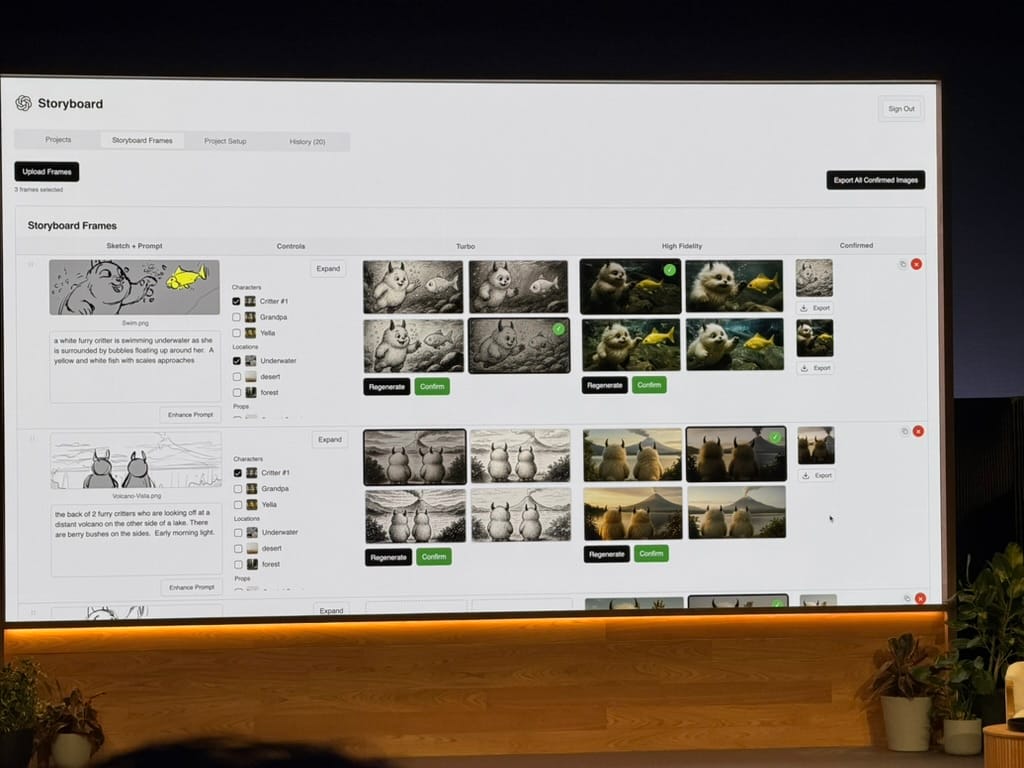
In one demo, an animation studio walked through how they built an AI-driven production pipeline using Codex and Sora 2 APIs. They stitched their own workflow together: Codex for building internal tools, Sora for generating scene. With that tool, they cut their storyboard iteration time by nearly 10x. It was a cool demo, and it also offered a preview of how work will look like in the near future.
We’re entering an era where anyone can build their own stack, blending AI reasoning, data, and creativity into something uniquely theirs. The barriers that once separated engineers, designers, and domain experts are blurring. Again, in the AI era, the core skill isn’t coding from scratch—it’s orchestrating intelligence.
Even if some of these improvements like faster execution, smoother handoffs, more consistent evaluations feel incremental, they add up to something huge. Each loop compounds. Each iteration becomes a bridge to new creative possibilities.
Walking out of DevDay, I didn’t feel overwhelmed by hype; I felt grounded. The progress is real. The tools are maturing. And the role of builders (especially product managers) is becoming clearer: to choreograph how humans and agents think, create, and learn together.
The future is emerging in tight, meaningful loops, each one enabling the next. And for those of us lucky enough to build in this moment—
There’s never been a better time in history to be a builder.
MJ Kang Newsletter
Join the newsletter to receive the latest updates in your inbox.


